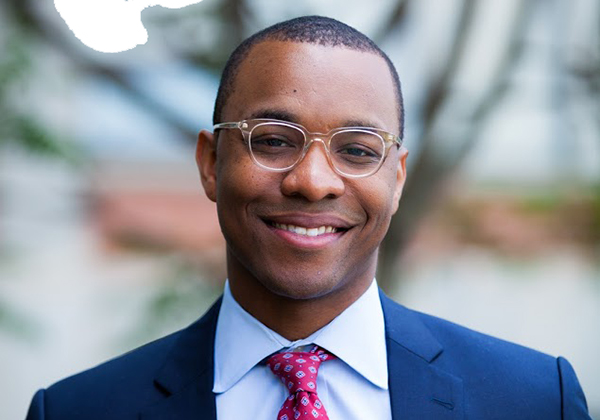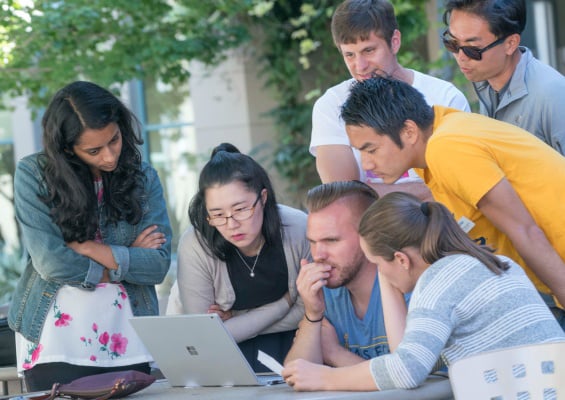Adrian Williams is fresh from working on a slew of deals at Credit Suisse where he is a dedicated investment banker. But whatever you do, don’t put him in a box. He loves art, music, and literature and has packed a lot of volunteer work into his career.
“At times, I even wanted to be a starving artist,” says Adrian, MBA 18. “But my career was about building a tool set. I wanted to build the tools that make me more dangerous like a Swiss army knife, and my pursuit at Berkeley was about sharpening one blade.”
Investment banking was the blade and the full-time Berkeley Haas MBA program was the place.
“I went to Brown University,” says Adrian, “so for an MBA I was thinking I could replicate that inclusive, civic-minded, socially aware community. I felt that energy in Berkeley; it had a special draw.”
When he came to campus, he says, “I quickly realized the business school wasn’t just about accountants, bankers, and consultants. Berkeley was interested in the total person. Not everything I wanted to pursue fit neatly into the investment banker role, and I found that was the case with my classmates. They didn’t fit into boxes. They wanted to be a consultant at McKinsey, but they also wanted to play the trumpet.”
The right fit for Berkeley Haas
Adrian doesn’t think there’s just one type of person for whom Berkeley is the right fit, but there are types for whom Berkeley would be the wrong fit.
“It wouldn’t be great for people who don’t like to be challenged and stimulated,” he says. “If you aren’t open to intense discussions on social, philosophical, and geopolitical issues you are going to be annoyed very often. If you’re only concerned about your personal outcomes, it’s not a good fit because everyone is very communal and collaborative. Most are concerned with growing the pie rather than their piece of the pie.”
Consortium offers community
Adrian credits several Berkeley-aligned organizations for helping him get in -- and fit in -- to the MBA program. One is the Consortium whose mission is to assist people of color or under-represented minorities gain admission to business schools and develop their careers.
“There are a lot fewer people who look like us in business school” than in society at large, he says. “And we have some of the same needs and questions. I think for minorities and people of color, the Consortium does a great job of helping people get into business school, offering financial support, preparing for your first year, and with career development. It gives you a sense of community.”
Coursework demands attention
When asked to tick off some memorable courses at Berkeley, Adrian says the hardest was Peter Goodson’s Mergers and Acquisitions course. “You had to do a ton of prep on cases and he has this Socratic method of questioning,” he says. “I guess I liked the pain so much I later became a graduate student instructor for the course.”
But the most influential was “Dialogues on Race,” a student-run course created by two of his classmates.
“It was an incredible survey and discussion class on race and ethnicity issues,” says Adrian. “It was probably the most impactful class and goes back to why I wanted to come to Haas. Not many places would have a class like that or would allow students to create and run it.”
The right side of the b-school brain
Outside of class, extracurricular activities were a big part of Adrian’s experience at Berkeley. As VP of Social, he was responsible for a host of small- and large-scale social and networking programs: talent shows, cultural events, family outings. But his best work was likely Right Angles, a print publication that celebrated the artistic achievements of his classmates: singers, musicians, writers, actors, as well as a DJ, a break-dancer, a burlesque dancer, a leather crafter, a pastry artist, and a fashion designer.
Right Angles, says Adrian, was an exploration of the right side of the Berkeley business school brain.
So what did all this have to do with helping Adrian become a successful investment banker? Maybe not a lot, he freely admits. “But it was about being a whole person.”
Like he said, don’t put him in a box.
/liz-120.png)








